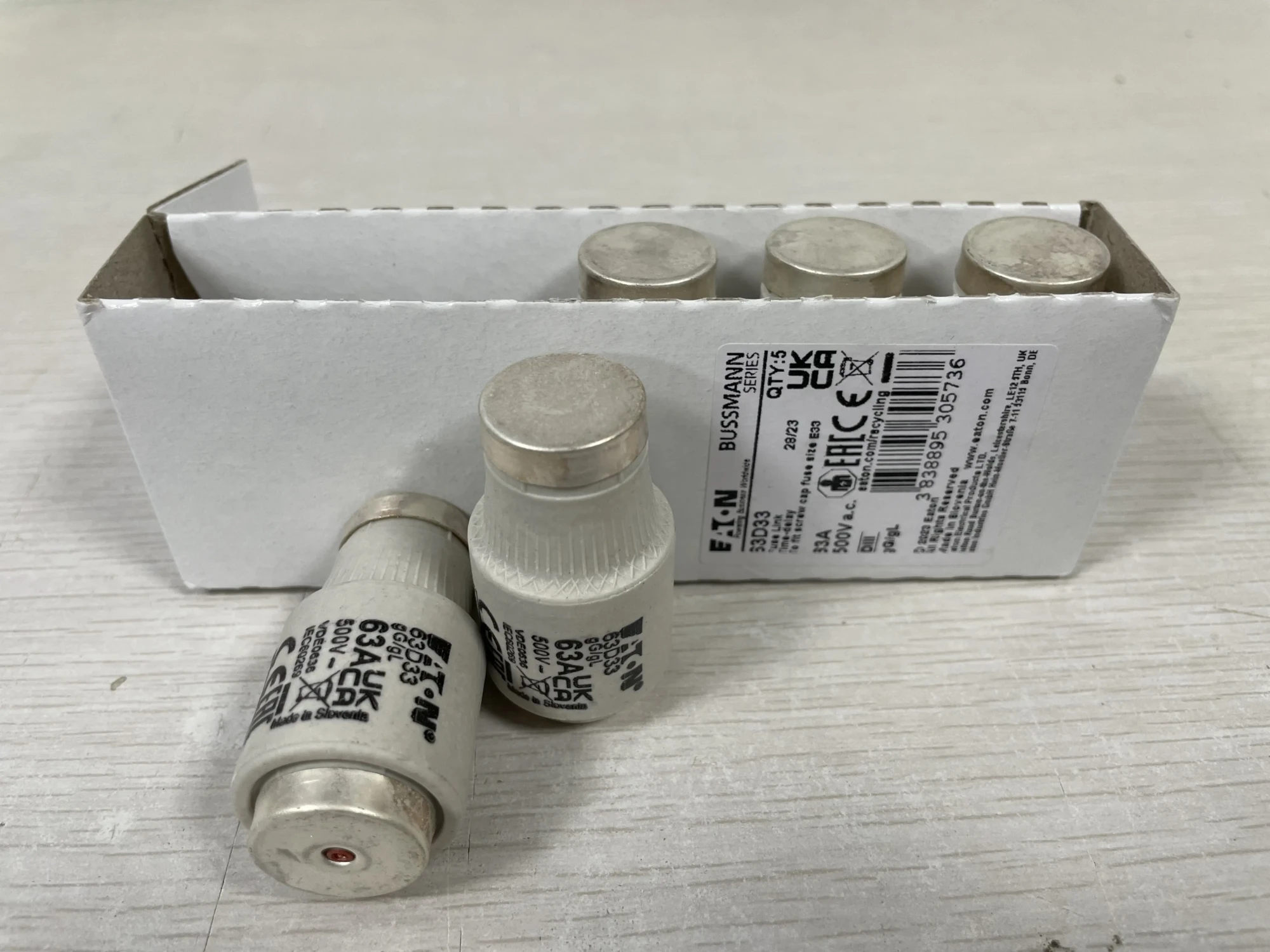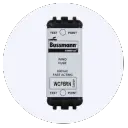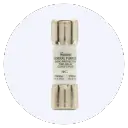Bussmann FNQ Fuses
Eaton Bussmann FNQ-1/8 Low Voltage Fuse
Rated 5.00 out of 5In stock
$16.74EachSKU: FNQ-1/8Weight 0.175 lbs Dimensions 0.01138889 × 0.01138889 × 0.04166667 yd Brand Eaton Bussmann
Eaton-Bussmann, with its headquarters in St. Louis, Missouri, is a division of Eaton Corporation that specializes in the production of circuit protection products. These products are designed for use in the electrical, electronic, and automotive industries, both domestically and on a global scale. The company boasts a strong manufacturing network with facilities located in three domestic and six international locations, reflecting its commitment to serving customers worldwide. With a team of approximately 3,000 employees, Eaton-Bussmann is well-positioned to meet the ever-evolving needs of its customers in the electrical protection industry.
Eaton stands as a forward-thinking leader in power management, focused on enhancing lifestyles and safeguarding the planet. Leveraging the worldwide momentum of electrification and digital innovation, they propel the global shift towards renewable energy, addressing pressing power management issues on a global scale.Product type Low Voltage Fuse
Voltage 500 Volt
Eaton Bussmann FNQ-R-1/10 Low Voltage Fuse
Rated 5.00 out of 5In stock
$11.33EachSKU: FNQ-R-1/10Weight 0.175 lbs Dimensions 0.01138889 × 0.01138889 × 0.04166667 yd Brand Eaton Bussmann
Eaton-Bussmann, with its headquarters in St. Louis, Missouri, is a division of Eaton Corporation that specializes in the production of circuit protection products. These products are designed for use in the electrical, electronic, and automotive industries, both domestically and on a global scale. The company boasts a strong manufacturing network with facilities located in three domestic and six international locations, reflecting its commitment to serving customers worldwide. With a team of approximately 3,000 employees, Eaton-Bussmann is well-positioned to meet the ever-evolving needs of its customers in the electrical protection industry.
Eaton stands as a forward-thinking leader in power management, focused on enhancing lifestyles and safeguarding the planet. Leveraging the worldwide momentum of electrification and digital innovation, they propel the global shift towards renewable energy, addressing pressing power management issues on a global scale.Product type Low Voltage Fuse
Voltage 500 Volt
Bussmann WCF Fuses
Bussmann FCF Fuses
Eaton Bussmann Series UL Class CF, FCF 1RN Fuse
Rated 5.00 out of 5In stock
$79.99SKU: FCF1RNBrand Eaton Bussmann
Eaton-Bussmann, with its headquarters in St. Louis, Missouri, is a division of Eaton Corporation that specializes in the production of circuit protection products. These products are designed for use in the electrical, electronic, and automotive industries, both domestically and on a global scale. The company boasts a strong manufacturing network with facilities located in three domestic and six international locations, reflecting its commitment to serving customers worldwide. With a team of approximately 3,000 employees, Eaton-Bussmann is well-positioned to meet the ever-evolving needs of its customers in the electrical protection industry.
Eaton stands as a forward-thinking leader in power management, focused on enhancing lifestyles and safeguarding the planet. Leveraging the worldwide momentum of electrification and digital innovation, they propel the global shift towards renewable energy, addressing pressing power management issues on a global scale.Product type Fuse
Voltage 600 Volt
Bussmann FRS Fuses
Bussmann HEB-AA Fuse
Eaton Bussmann HEB-AA Inline Fuse Holder
Rated 5.00 out of 5In stock
$18.99SKU: 504-HEB-AA-2Brand Eaton Bussmann
Eaton-Bussmann, with its headquarters in St. Louis, Missouri, is a division of Eaton Corporation that specializes in the production of circuit protection products. These products are designed for use in the electrical, electronic, and automotive industries, both domestically and on a global scale. The company boasts a strong manufacturing network with facilities located in three domestic and six international locations, reflecting its commitment to serving customers worldwide. With a team of approximately 3,000 employees, Eaton-Bussmann is well-positioned to meet the ever-evolving needs of its customers in the electrical protection industry.
Eaton stands as a forward-thinking leader in power management, focused on enhancing lifestyles and safeguarding the planet. Leveraging the worldwide momentum of electrification and digital innovation, they propel the global shift towards renewable energy, addressing pressing power management issues on a global scale.Product type Fuse
Voltage 600 Volt
Bussmann JJN Fuses
Bussmann JJS Fuses
Bussmann JKS Fuses
Eaton Bussmann Fuse JKS-1 Low Voltage Fuse
Rated 5.00 out of 5In stock
$13.99SKU: JKS-1Brand Eaton Bussmann
Eaton-Bussmann, with its headquarters in St. Louis, Missouri, is a division of Eaton Corporation that specializes in the production of circuit protection products. These products are designed for use in the electrical, electronic, and automotive industries, both domestically and on a global scale. The company boasts a strong manufacturing network with facilities located in three domestic and six international locations, reflecting its commitment to serving customers worldwide. With a team of approximately 3,000 employees, Eaton-Bussmann is well-positioned to meet the ever-evolving needs of its customers in the electrical protection industry.
Eaton stands as a forward-thinking leader in power management, focused on enhancing lifestyles and safeguarding the planet. Leveraging the worldwide momentum of electrification and digital innovation, they propel the global shift towards renewable energy, addressing pressing power management issues on a global scale.Product type Low Voltage Fuse
Voltage 600 Volt
Bussmann KRP Fuses
GFCI Breaker Wiring Requirements Explained

When it comes to ensuring the safety and efficiency of electrical systems, Ground Fault Circuit Interrupter (GFCI) breakers play a crucial role. These devices are designed to protect people and equipment from ground faults, which occur when there is an unintended path of electricity flowing to ground, often through a person’s body. Understanding GFCI breaker wiring requirements is essential for electricians, homeowners, and anyone involved in electrical installations to ensure compliance with safety standards and to prevent electrical shocks or fires. In this article, we will delve into the specifics of GFCI breaker wiring requirements, exploring their importance, how they work, and the steps to properly install them.
Importance of GFCI Breakers
GFCI breakers are mandated by the National Electrical Code (NEC) in various locations throughout a home or commercial building, especially in areas where water is present, such as bathrooms, kitchens, and outdoor spaces. The primary function of a GFCI breaker is to interrupt the circuit when it detects a ground fault, which could otherwise lead to severe electrical shock or even death. By installing GFCI breakers, individuals can significantly reduce the risk of electrical accidents, making them a critical component of electrical safety.
How GFCI Breakers Work
GFCI breakers operate by continuously monitoring the difference in current between the hot and neutral wires of a circuit. Under normal conditions, the current in these wires is equal. However, if a ground fault occurs, some of the current will be diverted to ground, causing an imbalance in the current between the hot and neutral wires. When this imbalance exceeds a predetermined threshold (usually 4-6 milliamps), the GFCI breaker trips, opening the circuit and preventing further current flow.
GFCI Breaker Wiring Requirements
The wiring requirements for GFCI breakers are specific and must be followed carefully to ensure proper function and safety:
-
Location: GFCI breakers must be installed in the main electrical panel or a sub-panel that serves the area where ground fault protection is required. The NEC mandates GFCI protection in bathrooms, garages, outdoor areas, kitchens, and near swimming pools, among others.
-
Circuit Requirements: Each GFCI breaker protects a single circuit. For areas requiring GFCI protection, it’s essential to dedicate circuits to specific applications (e.g., a dedicated 20-amp circuit for bathroom receptacles) to minimize unnecessary tripping due to overload.
-
Wiring: The hot (black), neutral (white), and ground (copper) wires must be connected correctly to the GFCI breaker. The neutral wire from the panel connects to the GFCI breaker’s neutral terminal, and the ground wire connects to the grounding terminal or bar in the panel.
-
Load Side: The load side connections (to the circuit being protected) are made by connecting the hot wire to the brass terminal on the breaker and the neutral wire to the silver terminal. Ensure all connections are secure and meet local electrical codes.
- Testing: After installation, GFCI breakers must be tested to ensure they are functioning correctly. This involves pressing the "Test" button on the breaker, which should cause the breaker to trip. Resetting the breaker and verifying that power returns to the circuit confirms proper operation.
Precautions and Maintenance
While GFCI breakers are designed to provide enhanced safety, there are precautions and maintenance procedures to be aware of:
-
Avoid Overloading: Overloading circuits can lead to unnecessary tripping of GFCI breakers. Ensure that the total load on a circuit does not exceed its rated capacity.
-
Regular Testing: Test GFCI breakers monthly by pressing the "Test" button to ensure they are working correctly. This simple procedure can help identify any malfunctioning devices that may not provide the expected level of protection.
- Replace as Needed: If a GFCI breaker fails to trip during testing or shows signs of wear, it should be replaced immediately. Never attempt to repair a faulty GFCI breaker, as this could compromise its safety features.
In conclusion, understanding and adhering to GFCI breaker wiring requirements is crucial for ensuring electrical safety in homes and commercial buildings. By following the guidelines outlined above and staying informed about the latest developments in electrical safety, individuals can protect themselves, their properties, and others from the dangers of electrical shock. Whether you’re an electrician, a homeowner, or simply someone looking to enhance electrical safety, the importance of properly installed and maintained GFCI breakers cannot be overstated.




 Bussmann WCF Fuses
Bussmann WCF Fuses Bussmann FCF Fuses
Bussmann FCF Fuses
 Bussmann FRS Fuses
Bussmann FRS Fuses Bussmann HEB-AA Fuse
Bussmann HEB-AA Fuse
 Bussmann JJN Fuses
Bussmann JJN Fuses
 Bussmann JJS Fuses
Bussmann JJS Fuses Bussmann JKS Fuses
Bussmann JKS Fuses
 Bussmann KRP Fuses
Bussmann KRP Fuses












